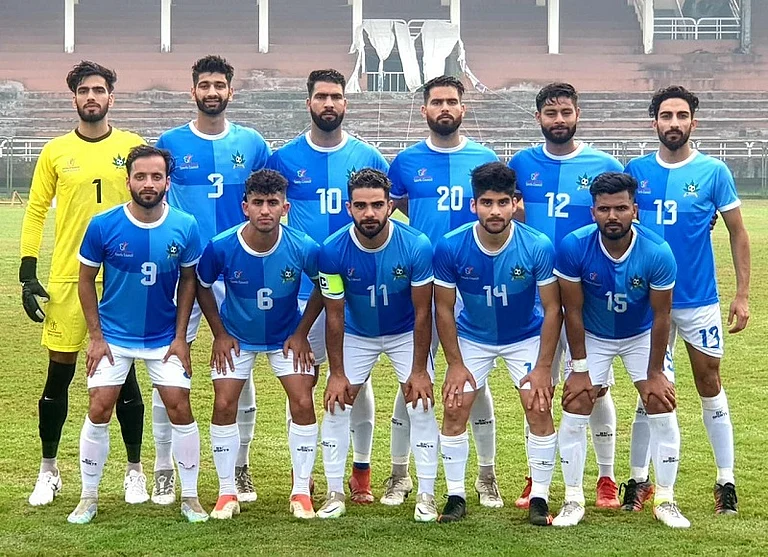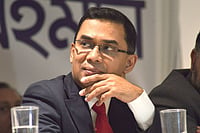Dewang Mehta, head of Nasscom or the National Association of Software and Service Companies, has an interesting one-liner for critics who feel Washington's decision to issue more H1-B visas-visas that allow visitors to work and earn in the US-will mean a new brain drain from India, and this time in the critical software sector, where India has tremendous competitive edge. "What West Asia is to oil, India's to software professionals," he says. "It's obvious more and more countries will look to the world's largest pool of software professionals. And honestly, brain drain is better than having the brain in drain."
Point. But the fact remains that the number of H1-B visas issued to Indians doubled between 1994 and 1996, and increased fivefold in 1999. Of the 65,000 H1-Bs the US issued last year, 20,000 were from India. Till date, a total of 1,95,083 Indians have obtained these visas; more than half have gained green cards. Typical H1-B applicants include architects, engineers, computer programmers, accountants, doctors and college professors. They include both people wishing to emigrate to the US, and professionals Indian companies send to their US offices.
Expectedly, the subcontinent is again in focus as US President Bill Clinton is about to put his stamp of approval on the provisions of S2045 legislations which will increase the number of visas to about 1,95,000 annually for the next three years (from the current 1,50,000). The new rules will allow greater job flexibility to employees, who will be initially bound to one employer, but will have freedom to change jobs after six months.
The new legislation will also allow the carryover of unused visas to the next year's quota. At the same time, the move will also hike application fees from $500 to $1,000. "Such fears are completely baseless because software manpower growth in India, once pegged at 14 per cent, is now much higher. The nation has no dearth of qualified professionals," says Mehta. Estimates peg the number of engineers, most of them experts in software, graduating in India every year at 1,20,000 (compared to 75,000 in the US), and the number of low-level software technicians at a whopping one million!
Nearly 85,000 Indian software professionals are expected to pick up H1-B visas over the next one year, a figure which could rise by at least 20 per cent the following year. Mehta says the demand will broadly match the supply India can muster from its current crop of technical colleges and private courses. But, adds he, the government needs to immediately implement its special package wherein 15 specialised institutes for software professionals are to be set up across the country by 2002 and a nodal centre planned to assess IT manpower needs, availability and absorption of professionals by other countries and suggest ways to fill in the demand-supply gap.
Interest is also high in Washington. Last week, US immigration officials deliberated with Nasscom on the need to maintain a database of the work experience and education of each employee in its member companies which all US consulate offices in the country could access. More than 200 Indian companies are already listed on the Indo-US Business Express programme which facilitates such employment in the US.
Recently, the Indo-American Chamber of Commerce opened an office in Washington to act as a facilitator for Indian software professionals seeking employment with US-based companies.
"This is no cheap labour migration, no Gulf boom. Computer professionals come here with specialised skills; it's wrong to equate them with unskilled labourers. Indian software professionals go to the US with solid education and experience and contribute to the growth of the American economy from day one. They provide solutions to complex problems and earn salaries on global standards. There's nothing cheap," says Mehta. "Not just from India, the US is the most favoured destination for professionals from all over the world."
Interestingly enough, Indian software majors welcome the new legislation. They see it as an opportunity to strengthen their US operations and expand aggressively in the North American market. Says Sudip Banerjee, chief executive (operations and staffing), Wipro Technologies: "The flexibility will allow software professionals to switch to working in other companies. We can now respond to our different customers by being able to ramp up projects, reassign people, depending on requirements and plan on optimum utilisation of people once they're sent overseas. I don't see this as a loss for Indian companies. Our software professionals can have their jobs intact with a base in India, and yet work in both India and the US, or any other country. This way they do not migrate and also operate in a global environment."
Remarks Hema Ravichandar, senior vice-president, Infosys Technologies: "The increase in H1-B visas will help us respond faster to our customer needs to depute employees onsite. Since our compensation structures overseas are competitive and comparable, we do not foresee an increase in attrition."
So what's the worry? Experts feel those raising the issue of brain drain are primarily Indian companies which operated on the lines of body-shopping outfits, charged hefty sums from their clients and paid a pittance to the employees. These companies now face a tougher future as the current Senate regulations will not allow disparity in employment terms. "Most US employers were hesitant to directly hire H1-B workers due to red tape delays (which have been anywhere from four to 16 weeks) in getting the H1-Bs transferred to them," says Washington-based Ripujeet Singh Madan, associated with the Immigrants Support Network (ISN) which lobbied hard with the US government to increase the H1-B visas and change employment regulations. "US employers instead choose to hire Indian IT professionals indirectly (via the bodyshops) who charged a hefty premium just because they held their H1-B visas. This will now change. I'm not suggesting all Indian companies practiced this, but then companies like Infosys which had more fair policies towards their employees had very low attrition while employers like TCS lost people in droves."
According to Madan, once the totalisation agreement is signed, Indian companies which have employees working with clients in the US will not have to pay social security taxes in both the countries. Indian professionals have to pay social security taxes in the range of 7-23 per cent in the US and pay taxes in India too. Recently, the US has signed totalisation agreements with South Korea, Singapore, Ireland and Australia. Shailesh Gala, software expert and president of the 17,000-member-strong ISN, calls it a key decision. "The next step is to clear the backlog of green card applicants."
But concerns still remain, especially at the academic level where experts feel India will feel the pressure unless it acts fast to develop more training institutes. "Good people will not stick to low paying jobs. We need good teachers to produce moderate quality in large numbers. For example, the starting salary of a computer science graduate from an IIT is more than the salary of a professor. What do you expect in such cases? Knowledgeable people will be forced to leave due to the pay difference. Look what happened to Russia and you will soon realise the situation," says Prof P.P. Chakravarty, professor of computer science, IIT Kharagpur.
Rues Professor P.V. Indiresan, former director of IIT Madras: "H1-B is not the issue. But the way software professionals are getting ready to leave, there's enough cause for concern. It looks like a complete sellout. It's more of an ideological issue. Why develop companies abroad? You have everything today, salaries on global standards, stock options...why not work here?" So will economic nationalism fizzle out in this lucre of the green bill? The question nags.


























